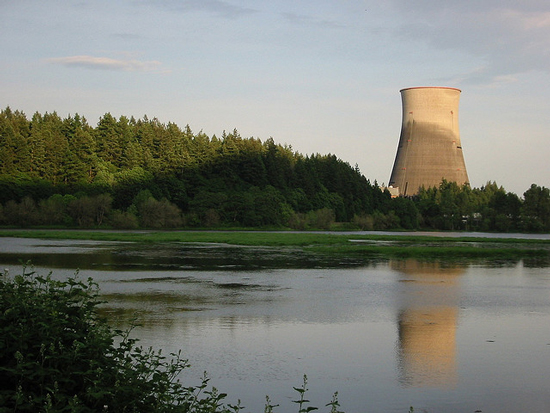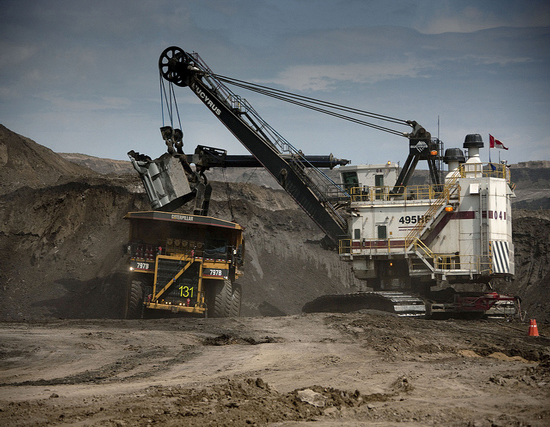Showing posts from category energy.
-
Southern Africa, China, and “Sustainable Access”
The Mineral Security of the United States
›In a report titled “Elements of Security: Mitigating the Risks of U.S. Dependence on Critical Minerals,” author Christine Parthemore from the Center for a New American Security writes, “Growing global demand coupled with the mineral requirements necessary for both managing military supply chains and transitioning to a clean energy future will require not only clearer understanding, but also pragmatic and realistic solutions.” Minerals and rare earth elements such as lithium, gallium, and rhenium are critical elements for many defense technologies (e.g. jet engines, satellites, missiles, etc.) and alternative energy sources (batteries and wind turbines). Parthemore argues that U.S. policy should focus on preventing suppliers from exerting undue leverage (as China did in 2010), mitigating fiscal risk and cost overruns, reducing disruption vulnerability, and ensuring the United States is able to meet its growth goals in clean energy and other high-tech fields. In a report from the U.S. Air War College, author Stephen Burgess writes of the potential for conflict over competition for “strategic minerals” in five southern African states: South Africa, the Democratic Republic of the Congo, Zambia, Zimbabwe, and Namibia. The report, titled “Sustainability of Strategic Minerals in Southern Africa and Potential Conflicts and Partnerships,” states that growing industrial countries like China will compete, potentially aggressively, with the United States for sustainable access to elements such as chromium, manganese, cobalt, uranium, and platinum group metals. Burgess recommends that the United States become more engaged in southern Africa by providing development assistance to mining communities and developing strategic partnerships.
In a report from the U.S. Air War College, author Stephen Burgess writes of the potential for conflict over competition for “strategic minerals” in five southern African states: South Africa, the Democratic Republic of the Congo, Zambia, Zimbabwe, and Namibia. The report, titled “Sustainability of Strategic Minerals in Southern Africa and Potential Conflicts and Partnerships,” states that growing industrial countries like China will compete, potentially aggressively, with the United States for sustainable access to elements such as chromium, manganese, cobalt, uranium, and platinum group metals. Burgess recommends that the United States become more engaged in southern Africa by providing development assistance to mining communities and developing strategic partnerships. -
India’s Quest for a Lower Carbon Footprint
›
Between 1994 and 2007, India reduced its carbon dioxide emissions by 35 percent. As a result, the country’s emissions per capita now register at just over a ton per year – less than China (nearly five tons) and much less than the United States (18 tons). On May 10, Wilson Center Public Policy Scholar Ajay Shankardiscussed how India made these reductions, and what the nation plans to do to bring them down further in the decades ahead.
According to Shankar, several factors account for the 35 percent reductions. One is market-based, with high costs having discouraged heavy carbon-based energy consumption. India levied a “huge de facto” carbon tax on all commercial and industrial uses of electricity, which led to prices as much as 80 percent higher than the cost of supply. Another reason is legislation: New Delhi passed a robust energy conservation law. The private sector was a major contributor to the reductions; Shankar pointed out that India is now the world’s largest hub for small fuel-efficiency vehicles, as embodied by the Tata Motors corporation’s Nano car.
Shankar acknowledged the need for further carbon reductions. As India’s economic growth continues and its citizens become wealthier, carbon emissions will likely increase as more people buy cars and invest in air conditioning. Accordingly, the country has announced its intention, by 2020, to lower emissions by 20 to 25 percent from 2005 levels. He identified two carbon-reducing “opportunities” for India in the coming decades. One is to make irrigation more energy-efficient through the use of solar energy.
Another opportunity lies in India’s cities, where 300 to 400 million people are expected to flock over the next two to three decades. Urbanization presents a considerable carbon challenge, given the proliferation of carbon-emitting vehicles and AC units envisioned by such migration. Shankar spoke of the need for “smart cities” replete with “green buildings,” parks, and electric vehicles. He argued that India has created these types of cities before – including Chandigarh, the capital of Punjab Province, back in the 1950s.
Shankar stated that solar and nuclear energy constitute the “game-changers” for lessening the country’s carbon emissions. New Delhi hopes to generate 20,000 megawatts of solar capacity by 2020, with projections of grid parity by 2017 – meaning that in just several years, solar power could be as cheap to generate as fossil-fuel-driven electricity. He also underscored the priority New Delhi places on nuclear energy, noting that Prime Minister Manmohan Singh was willing to stake his political survival on the passing of a controversial civil nuclear deal with Washington because of nuclear’s environmental benefits. Shankar insisted that the Indian government will not be deterred by Japan’s recent nuclear crisis.
While Shankar described New Delhi’s 20 to 25 percent reductions goal as “ambitious,” he contended that he is more optimistic than he would have been several years ago about India’s prospects for attaining that objective. India, he concluded, must “rule out no option, and pursue every option intelligently.”
Michael Kugelman is program associate with the Asia Program at the Woodrow Wilson Center.
Photo Credit: “Tata nano,” courtesy of flickr user mjaniec. -
Watch: Addressing the National Security Implications of U.S. Oil Dependency
›April 27, 2011 // By Schuyler NullBoth the civilian and military sectors have key roles to play in achieving energy security as the United States addresses the national security implications of its oil dependency. Yesterday, the White House hosted a forum with senior officials from both the public and private sector to highlight avenues toward achieving that security. Co-hosts Deputy Energy Secretary Daniel Poneman and Deputy Defense Secretary William Lynn were joined by Woodrow Wilson Center President Jane Harman, John Podesta of the Center for American Progress, and John Deutch of the Massachusetts Institute of Technology.
The panelists discussed ongoing cooperation between the Department of Energy and Department of Defense, and Harman in particular highlighted the power of the military to drive innovation and more efficient production of energy-efficient technologies.
“‘Energy security’…reminds us that important domestic energy developments have international consequences, and important international events have domestic consequences,” said Deutch, pointing out the linked, global nature of energy markets and climate change.
Deputy Secretary Lynn highlighted the tactical tactical benefits of reduced petroleum dependence with the example of a solar panel pilot program being conducted by the Marine Corps in Afghanistan:The regiment selected to try out the solar panels deployed to one of the most violent districts in Helmand province. The operational gains were immediate: Marines ran two patrol bases completely on solar power and cut diesel fuel consumption at a third base by over 90 percent. On one three-week foot patrol, flexible solar panels eliminated battery resupply needs entirely, ending supply drops that previously were required every 48 hours.
Watch the full forum above, and see also the recent National Conversation at the Woodrow Wilson Center that focused on “A New National Security Narrative.” -
Biofuels: Food, Fuel, and Future?
›The Wilson Center’s Program on America and the Global Economy (PAGE) together with the Brazil Institute, have held a series of conferences focused on the field of biofuels and its impact both internationally and domestically. As part of the series, PAGE has published the results of a conference held last July on the current “state-of-play” for the biofuels industry in the United States.
In the brief, Biofuels: Food, Fuel, and Future?, C. Ford Runge and Robbin S. Johnson, of the University of Minnesota, and Calestous Juma, of Harvard University, provide context on the various federal mandates, subsidies, and policies that affect the U.S. biofuels market. They also present recommendations to improve what is now a not-so-new market, with the aim of reducing damaging effects on food prices and creating more international competition. The brief was edited by PAGE Director Kent H. Hughes and Elizabeth A. Byers.
Read more from PAGE on their blog, America and the Global Economy, and download the full brief and other PAGE publications from their website at the Wilson Center. -
What’s the Link Between Population and Nuclear Energy?
›The popular Big Green Purse blog, written by best-selling author Diane MacEachern, recently asked the Worldwatch Institute’s Robert Engelman, “What’s the Link between Population and Nuclear Energy?” The blog, which encourages women to use the “power of the purse” to improve the environment, wanted to know: “Why aren’t we talking about reducing population as part of our global strategy to minimize dependence on power sources [like nuclear energy] that pollute the environment and threaten people’s health?”
While “reducing population” is not possible, slowing population growth may be, if fertility rates continue to fall. As always, Engelman answered the tough question with thoughtful aplomb, offering three core values as a starting point:One: see the global environmental dilemma not as a problem to be solved but as a predicament to be responded to. We can’t control our future, but we can act with integrity as we aspire to build just societies in an environmentally-sound world. Addressing our numbers can become part of that.
But I’m wondering how the readers of Big Green Purse – which is replete with media-friendly lists like “Top Ten Eco-Tricks” – can translate population and its messy intersection of human rights, health care, and consumption levels into an individual purchasing decision.
Two, embrace human rights as a foundation for our actions. All people – even if too many or consuming too much – have dignity and a right to be here. As it happens, population policies based on the right of all women to choose whether and when to bear a child actually slow the growth of population. …
Three, acknowledge that no one can claim a greater right than anyone else to use energy and natural resources. This is called equity. We cannot object if the poorest people living today and yet to be born succeed in gaining the means to consume as much as Americans do.
As Engelman writes, “The idea that we can easily trim our individual consumption to come into balance with nature – worthy as that effort is – looks increasingly naïve. If people in the developed world slash their per capita greenhouse emissions by half, their effort could be counterbalanced by people in developing countries boosting theirs by just 11 percent.”
Photo Credit: “Trojan Nuclear Power Plant,” courtesy of flickr user tobo. -
Forest Conservation Method a Fit for Canada’s Oil Sands?
›In Wednesday’s speech on U.S. energy security, President Obama stated clearly that the United States would continue to rely on oil imports from Canada and other stable nations. But serious environmental concerns continue to dog the Canadian oil sands industry. Could an agreement reached by Canada’s Forest Products Association provide a model for a way forward?
In May 2010, the Canadian Boreal Forest Agreement (CBFA) was signed by 21 members of the Forest Products Association of Canada (FPAC) and nine major environmental groups, including Greenpeace, the Nature Conservancy, and the Pew Charitable Trusts, without government involvement. The three-year agreement represents the largest forest conservation plan in history and protects more than 72 million hectares of Canada’s Boreal Forest. It also ended a long “do not buy” campaign of FPAC products, previously spearheaded by environmental organizations.
The CBFA essentially commits FPAC to the highest environmental standards of forest management and conservation, as well as the suspension of logging in environmentally sensitive areas, in part to protect endangered caribou populations. In return, environmental organizations agreed to support FPAC members.
The oil sands industry faces a similar challenge. In both cases, industry and environmental NGOs have clashed in a long and bitter battle over industry practices and their impact on the environment. The difference is that FPAC realized that directly engaging environmental groups in reasoned discussion might be a more intelligent approach to resolving environmental challenges than shouting back and forth at one another. FPAC also believes that buyers will be attracted to their newfound reputation for sustainable practices and higher ethical standards.
Model Agreements
Oil sands producers have much to gain by engaging the environmental community in new and innovative ways Should the CBFA model be followed, the oil sands industry may be able to negotiate an agreement with environmental organizations and voluntarily agree to higher environmental standards in return for recognition and support of their efforts from key environmental organizations.
This wouldn’t be the first initiative where creative engagement between environmental organizations and industry served to mutually benefit both sides. For instance, in 1999, WWF and Unilever created the Marine Stewardship Council (MSC), a program that rewards fisheries employing environmentally sustainable practices by recognizing their efforts through MSC certification and eco-labeling. Member fisheries maintain that MSC labeling has helped them retain existing markets, expand into others, and in some cases obtain a price premium for their product.
Such an initiative would go a long way to allow oil sands producers to shed their damaging reputation for producing “dirty oil.” Even if an agreement could not be reached, the oil sands industry would be viewed at the very least as willing to listen to the concerns of environmental organizations and take such issues seriously.
Not Perfect, But It’s a Start
The CBFA model may not be a perfect fit for the oil sands but it demonstrates that environmental groups and industry can find common ground on extremely contentious issues.
Finding this common ground must begin with accepting that the oil sands will never be “green.” According to a study by the Royal Society of Canada, in 2008, oil sands mining and development operations covered an area roughly the size of the state of Illinois and was responsible for emitting nearly 37 million tons of CO2. The study also found that there are legitimate concerns regarding the impact of oil sands development on the quality and quantity of regional freshwater supplies.
Nevertheless, the oil sands also represent a critical source of stable energy supplies for Canada and the United States, and calls by some environmental NGOs to halt oil sands production are unrealistic. More than 20 percent of U.S. oil is sourced from Canada, making it the United States’ leading supplier, and roughly half of that comes from the oil sands.
A CBFA-style agreement could help oil sands producers secure the U.S. market, which currently takes 99 percent of Canada’s oil exports, by quelling campaigns in the United States to stop imports from the oil sands. And under an agreement similar to the CBFA, the environmental community could have a larger say in how it is developed and extracted
As it stands, both industry and the environmental community remain engaged in a heated war of words, with neither side really listening to the other. Until they are willing to sit down and engage each other in new ways, both groups are likely to continue to talk over one another and make little progress on striking an environmental and economic balance that could ultimately benefit both sides.
Ken Crist is a program associate with the Canada Institute at the Woodrow Wilson International Center for Scholars.
Sources: Sources: The Canadian Boreal Forest Agreement, National Resources Defense Council, The New York Times, Royal Society of Canada, Vancouver Sun.
Photo Credit: “Athabasca oil sands digger,” courtesy of flickr user . Shell, and “Boreal forest 2009,” courtesy of flickr user Gord McKenna. -
Hu Angang and Liang Jiaochen, ChinaDialogue
China’s Green Five-Year Plan: Making “Ecological Security” a National Strategy
›March 16, 2011 // By Wilson Center StaffThe original version of this article, by Hu Angang and Liang Jiaochen, appeared on ChinaDialogue.
Five-year plans (FYPs), which set down and clarify national strategy, are one of China’s most important policy tools. Just as they have helped to drive China’s economic success over recent decades, so they will play a pivotal role in putting the country on a green development path. The 12th Five-Year Plan, now under consideration by the National People’s Congress, marks the beginning of that process in earnest (Editor’s note: Since this was originally published, the National People’s Congress voted in favor of the plan).
FYPs embody the concept of progressing by degrees, or developing step by step. This approach has been one of the driving forces behind China’s economic progress in recent decades and will now provide the platform for its green development. It is the methodology underpinning China’s socialist modernization: to reach a new step in development every five years. Unstinting efforts over a number of FYPs have driven China’s transformation.
Climate change presents a long-term and all-encompassing challenge for China. It demands a long-term development strategy and broad goals, as well as near-term action plans and concrete policies. Combining these is precisely the idea behind FYPs.
At the global climate change summit in Copenhagen in 2009, China demonstrated it has the long-term political will to respond to climate change; to work with the world to limit global temperatures to no more than two degrees Celsius above pre-industrial temperatures (the goal set out in the Copenhagen Accord). In November that year, the Chinese government formally put forward its medium-term targets on climate change: a reduction in energy intensity of 40 percent to 45 percent on 2005 levels by 2020, and generation of 15 percent of energy from non-fossil fuel sources by the same date.
Continue reading on ChinaDialogue.
Hu Angang is a professor at the Chinese Academy of Sciences and Tsinghua University and the director of the Centre for China Study. He has worked as the chief editor for China Studies Report, a circulated reference for senior officials. Liang Jiaochen is a PhD student at Tsinghua University’s School of Public Policy and Management.
Sources: Business Green, UN Framework Convention on Climate Change, World Resources Institute.
Photo Credit: Adapted from “China: CREME,” courtesy of flickr user IFC Infrastructure (Alejandro Perez/IFC). -
Engineering Solutions to the Infrastructure and Scarcity Challenges of Population Seven Billion (and Beyond)
›March 9, 2011 // By Hannah MarquseeA recent Institution of Mechanical Engineers (IME) report, Population: One Planet, Too Many People?, argues that “sustainable engineering solutions largely exist for many of the anticipated challenges” of a world population scheduled to top seven billion this year and projected to reach upwards of nine billion by 2050. “What is needed,” write the authors, “is political and social will, innovative financing mechanisms, and the transfer of best practice through localization to achieve a successful outcome.”
City lights on the French-Italian border, from the International Space Station.
Since nearly all of the population growth in the next 40 years will occur in the developing world, the report recommends nations adopt five “Engineering Development Goals” (listed below), alongside the Millennium Development Goals, to meet the needs of the world’s growing poor. The report also recommends that developed countries provide technical engineering expertise to developing countries in the model of the UK Department for International Development’s Resource Centers. This assistance will help them implement these goals and “leapfrog” the “resource-hungry, dirty phase of industrialization.”
Population Growth a Threat?
While the report issues a clear call to action for engineers and governments, it does not address the issue of population growth per se, which has caused some to argue that population growth might not be the problem after all. The Independent, for example, initially headlined their article about the report, “Population Growth Not a Threat, Say Engineers,” but changed it after publication to “Population Growth a Threat, Say Engineers.”
The IME authors clearly state that “population increase is likely to be the defining challenge of the 21st century,” and the report provides practical steps governments can take given current population trends. But its focus on “engineering solutions” highlights the ongoing debate between those who argue that technological fixes alone can solve the world’s social and environmental problems, and those who advocate for contraception as a low-cost path to a sustainable world.
“I would love there to be technological solutions to all our problems,” said Nobel Laureate Sir John Sulston at a recent ECSP event on the UK Royal Society’s forthcoming People and the Planet study, but “we’ve got to make sure that population is recognized, while not the sole problem, as a multiplier of many others. We’ve got to make sure that population really does peak out when we hope it will.”
The projections on which the report is based will be difficult to hit without dramatic reductions in fertility, mainly in sub-Saharan Africa – a goal that is nigh impossible without increased investment in access to voluntary family planning. The UN high variant projection, which calculates a much less dramatic decrease in current fertility levels, has world population reaching 11 billion by 2050.
“There is no need to delay action while waiting for the next greatest technical discovery,” write the IME authors. “If action is not taken before a crisis point is reached there will be significant human hardship. Failure to act will place billions of people around the world at risk of hunger, thirst, and conflict as capacity tries to catch up with demand.”
Engineering Development Goals
1. “Energy: Use existing sustainable energy technologies and reduce energy waste.”
Currently, “over 1.5 billion people in the world do not have access to energy,” says the IME report. In addition, global demand for energy is expected to rise by 46 percent by 2030, and the world will need to invest $46 trillion over the next 40 years to shift towards renewable energy sources. The report points out that “there are no insurmountable technical issues in sourcing enough energy for an increasingly affluent larger global population.” Instead, “the difficulties lie in the areas of regulation, financing, politics, social ethics, and international relations.”
2. “Water: Replenish groundwater sources, improve storage of excess water and increase energy efficiencies of desalination.”
Global water consumption, write the IME authors, is predicted to rise 30 percent by 2030 due to population growth and increased energy and agricultural consumption. These numbers are troubling, considering that a recent study in Nature found that more than 1.7 billion people, almost entirely from the developing world, already face chronically high water scarcity.
However, this problem is not simply one of a shortage of water, rather “a case of supply not matching demand at a certain time and place where people are living,” says the IME report. Engineering solutions must involve the capturing and storage of rain water, more cost-effective desalination techniques, and aquifer storage and recovery techniques, says the report. But more importantly, “decision-makers need to become more aware of the issues of water scarcity and work more closely with the engineering profession in finding localized solutions.”
3. “Food: Reduce food waste and resolve the politics of hunger.”
The IME report cites the World Bank’s prediction that demand for agricultural production will double by 2050, due to a combination of population growth, more people turning to meat-heavy diets, and agricultural shortages from extreme weather events. Efficiencies can go a long way towards filling this supply-demand gap, says the IME report. In developed countries an average of 25 percent of edible food is thrown away in the home after purchase, while in developing countries, as much as half of crops are lost before ever reaching market due to lack of adequate transportation and storage infrastructure.
For example, the authors point out that in India, “between 35 percent and 40 percent of fruit and vegetable production is lost each year between the farm and the consumer” – an amount greater than the entire annual consumption of the UK. Americans are also big food wasters. A USDA study found that in one year, 27 percent of all edible food was thrown away in the United States after purchase. Developed countries can significantly increase efficiency “through behavioral change that recognizes the value of food,” says the report.
4. “Urbanization: Meet the challenge of slums and defending against sea-level rises.”
Urbanization “presents one of the greatest societal challenges of the coming decades,” write the IME authors, but cities also represent a “significant opportunity…to be very efficient places to live in terms of a person’s environmental impact.”
According to the World Bank, by 2050, three quarters of the world will live in cities, and nearly all of this growth will occur in the developing world. Already, one third of the world’s urban population live in “appalling slum conditions,” says the IME report. Challenges for the urban poor are especially severe in coastal areas – home to three quarters of the world’s large cities – where they are vulnerable to flooding and extreme weather events, which according to new studies, have increased as a result of climate change.
The report calls for nations to use an “integrated, holistic approach” that brings in engineering expertise early in the planning process to create infrastructure that is individualized to a city’s unique cultural, geographical, and economic needs.
5. “Finance: Empower communities and enable implementation.”
Implementation of the above four goals will require “innovative soft loans and micro-financing, ‘zero-cost’ transition packages, and new models of personal and community ownership, such as trusts,” write the IME authors. Furthermore, communities must play a central role in decision-making in order to find appropriate and local solutions.
In all five of these goals, “barriers to deploying solutions are not technological,” says the report. Instead, they are political and social. Better international cooperation, dialogue, and sharing of expertise between and amongst engineers, decision-makers, and the public, is crucial to implementation.
Sources: Department for International Development, Guardian, The Independent, Institution of Mechanical Engineers, Nature, The New York Times, UN Habitat, United Nations, USDA, World Bank.
Image Credit: “City Lights, France-Italy Border (NASA, International Space Station Science, 04/28/10),” courtesy of flickr user NASA’s Marshall Space Flight Center.











